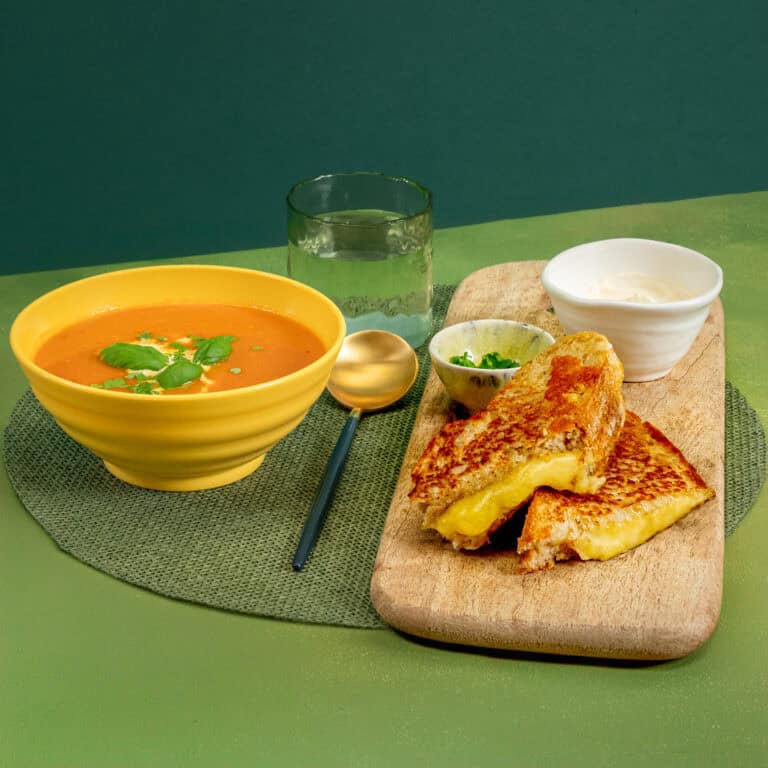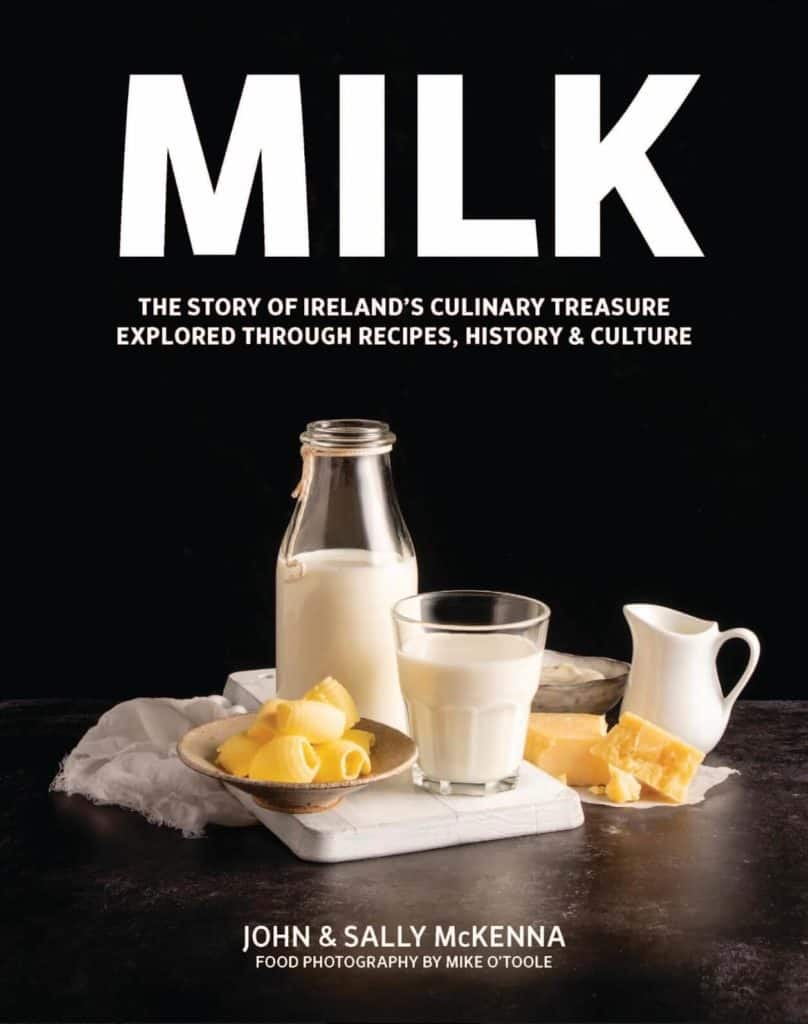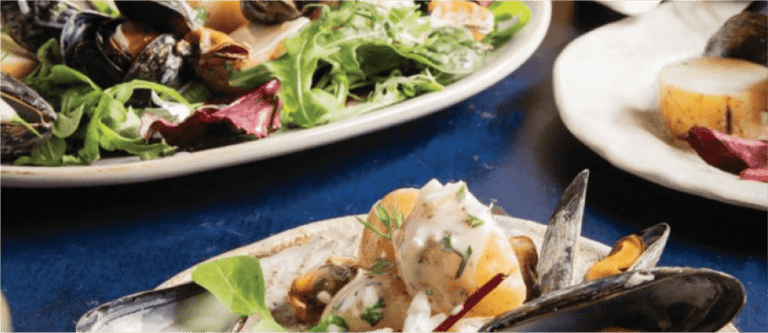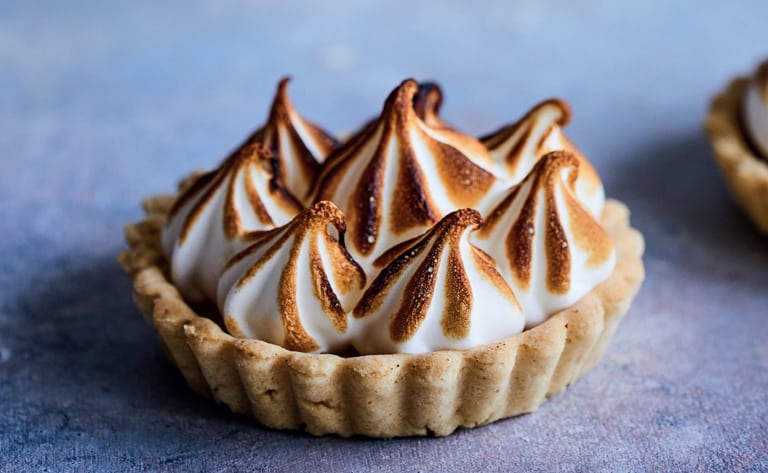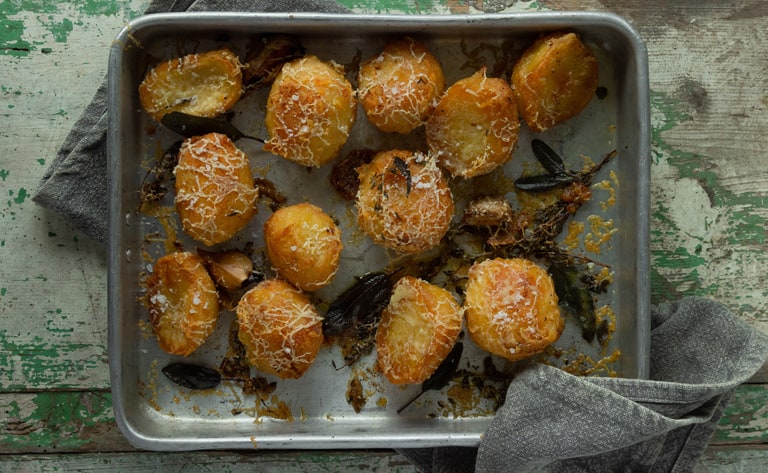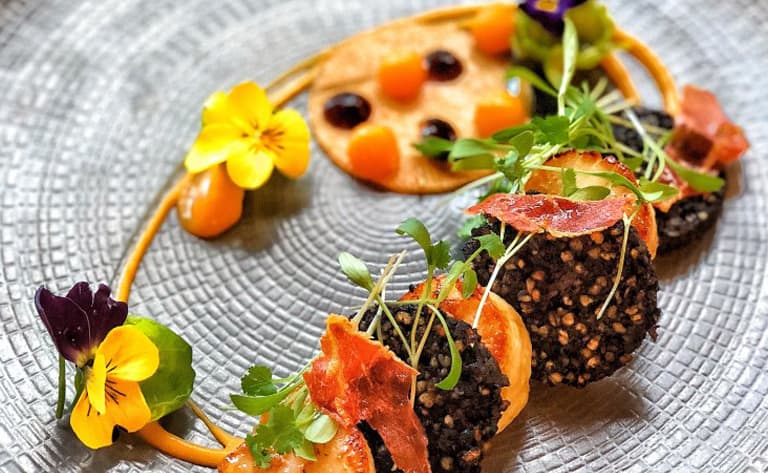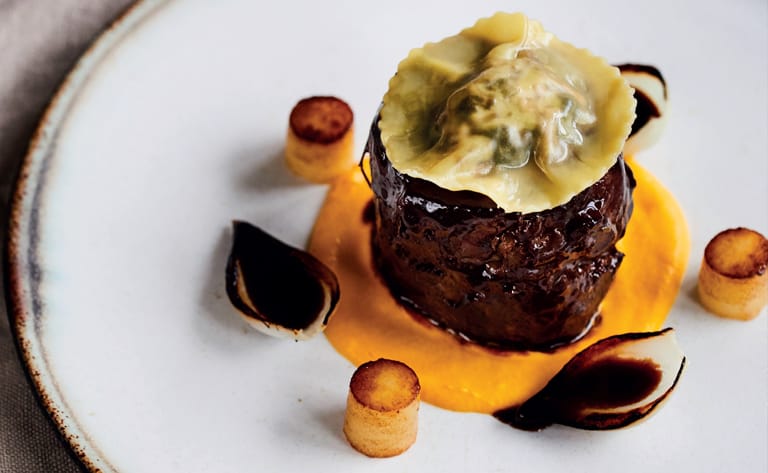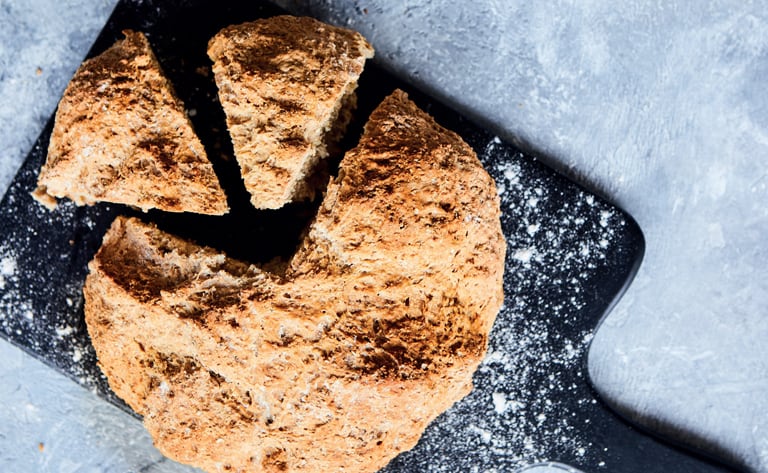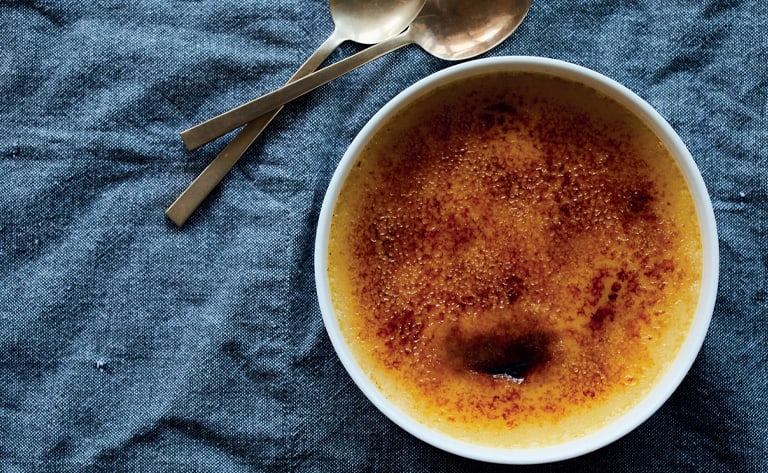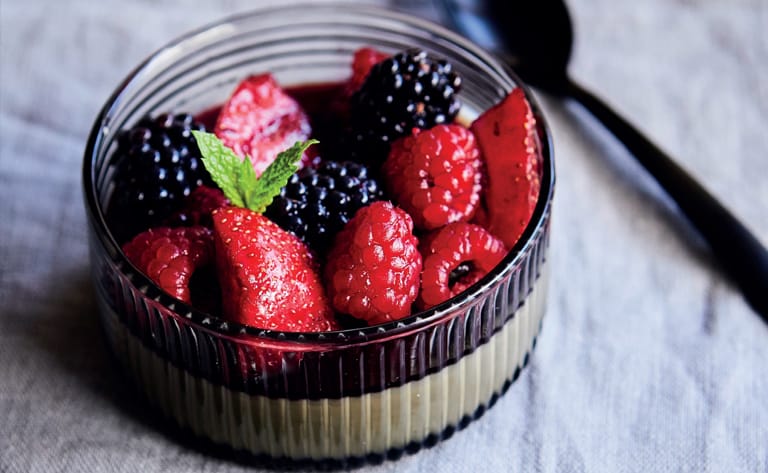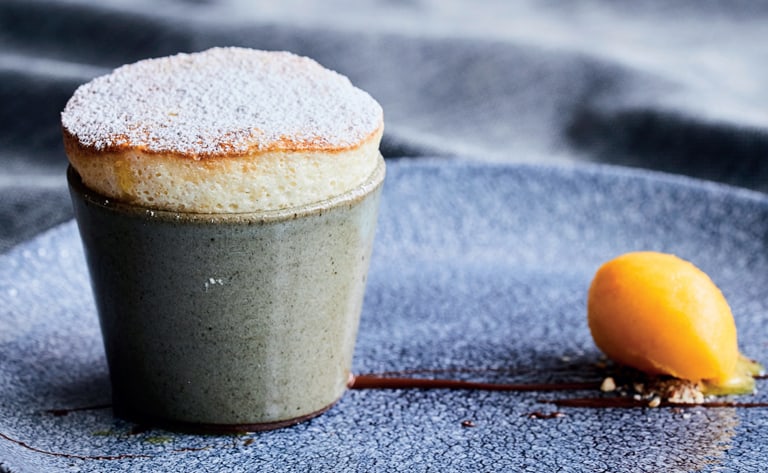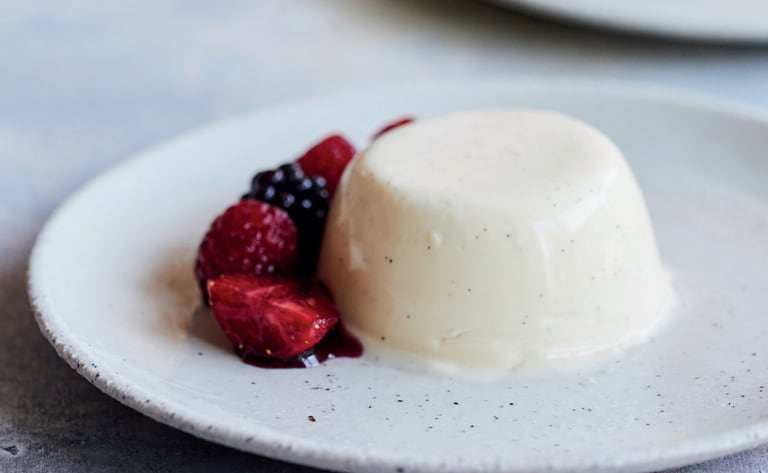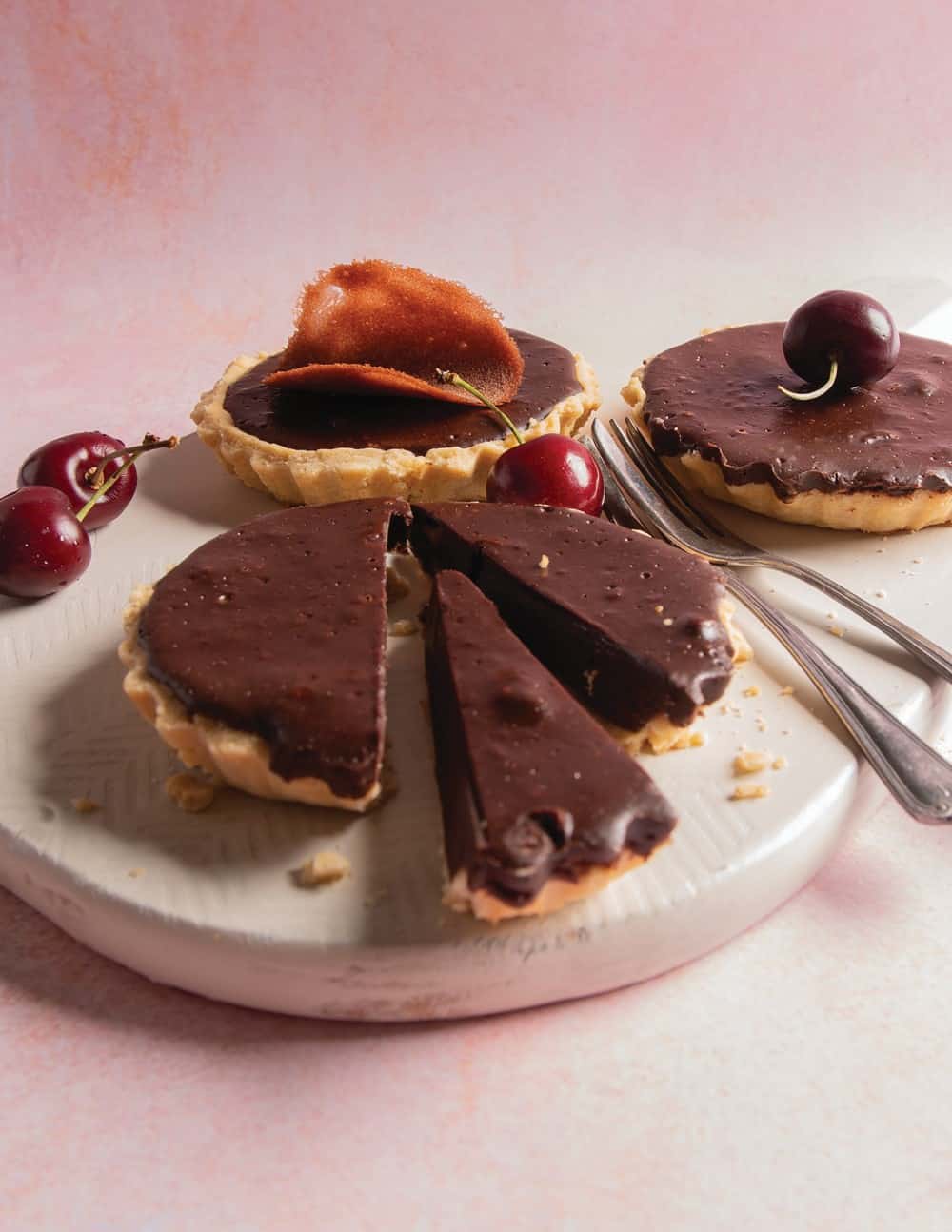1
Try to be confident and bring the pastry together as quickly as you can. Don’t knead it too much or the heat from your hands will melt the butter. A good tip is to hold your hands under cold, running water beforehand to make them as cold as possible. That way you’ll end up with a delicate, flaky pastry every time.
2
Sieve the flour from a height into a clean bowl and mix in the sugar. Using your hands, work the cubes of butter into the flour and sugar by rubbing your thumbs against your fingers until you end up with a fine, crumbly mixture. This is the point where you can spike the mixture with interesting flavours, so mix in your lemon zest if using.
3
If the pastry is too dry, add the milk to the mixture and gently work it together until you have a ball of dough. Flour it lightly. Don’t work the pastry too much at this stage or it will become elastic and chewy, not crumbly and short. Flour your work surface and place the dough on top. Pat it into a flat round, flour it again, lightly, and wrap it in cling film. Put it into the fridge to rest for at least half an hour.
4
While the pastry is chilling, make the lemon curd. Zest and juice the three lemons and then place all the ingredients into a bowl and set over a pot of simmering water. This is called a bain-marie. Whisk it all together and you’ll notice the mixture will thicken after 15–20 minutes. Once thickened, you can pass it through a sieve to make it smooth. The easiest and fastest way to do this is to use a ladle to push it through the sieve.
5
Preheat the oven to 180ºC/400ºF/gas mark 6.
6
Roll the pastry nice and thin, then line six 10cm loose-bottomed tart tins with it. Line the pastry with some scrunched up parchment paper or some heatproof cling film, then fill it with either baking beans, rice or dried marrowfat peas. A top tip is to fill each one to the brim, otherwise the sides will shrink. Bake the pastry blind for 10 minutes.
7
Remove from the oven and take out the lining and whatever else you have used, then bake for a further 10 minutes in the oven until crispy. Take them out and allow to cool. Once the pastry is cooled, add 2 tablespoons of the curd filling and place into the fridge to set the curd for 15–20 minutes.
8
Once you’ve that done you can make the meringue. In a clean, dry bowl whisk the egg white with an electric mixer until stiff peaks form. You should be able to hold this upside down over your head without it dropping. If it is too loose keep whisking until you achieve this. If the egg white is under-whisked it will turn into a sloppy mixture.
9
Add the sugar in small amounts at a time, continuing to whisk until it is all used. If you add all the sugar in at once the meringue won’t hold its stiff peaks. Once ready, spread the meringue on top of the curd with a spatula or you can even go to the effort of piping it on with a nozzle if you want this to look really impressive.
10
To finish you can blow torch the meringue or pop the tarts under the grill for 1–2 minutes to colour nicely. Place into the fridge until ready to serve.
